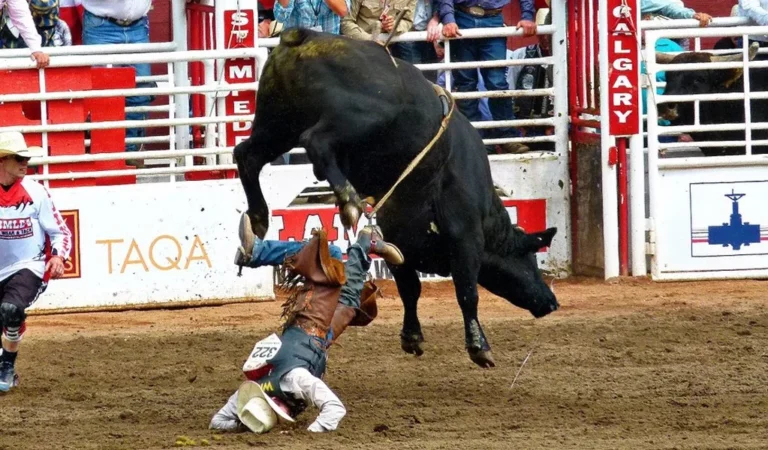What is Rugby Scrum: Unravel the Power Behind the Chaos

A Rugby Scrum is a collective method of restarting a game after a minor infringement. It involves both teams forming a huddle and engaging in a physical contest to gain possession of the ball.
The scrum is a fundamental element of rugby that promotes teamwork, strength, and strategy among players. With players from both teams coming together to compete for the ball, the scrum showcases the physicality and intensity of the sport. Understanding the dynamics of a rugby scrum is crucial for players to effectively execute this set piece and gain an advantage over their opponents on the field.
We will delve deeper into the intricacies of rugby scrums, exploring its history, rules, and significance in the game of rugby.

HISTORY OF RUGBY SCRUM
ORIGINS OF SCRUM
Rugby, a sport renowned for its physicality and teamwork, has a unique set piece known as the scrum. The origins of the rugby scrum can be traced back to the game’s beginnings in the 19th century. As the sport evolved, players sought more structured methods of restarting play, leading to the development of the scrum as a pivotal aspect of the game.
EVOLUTION OF SCRUM IN RUGBY
The evolution of the scrum in rugby has been an intriguing journey, characterized by strategic and safety adaptations. Initially, scrums were unregulated and often dangerous, but over time, rules and techniques were formulated to minimize risks and enhance fairness. Modern rugby scrums now embody a balance of strength, technique, and safety, serving as a testament to the game’s progression.
PURPOSE OF RUGBY SCRUM
A rugby scrum is a key element of the game that involves players from both teams coming together in a unique formation to restart play. The purpose of the rugby scrum is to contest possession of the ball after a minor infringement has occurred, such as a forward pass or knock-on. It is a dynamic and strategic aspect of the game that requires strength, technique, and cohesive teamwork from the players involved.
KEY OBJECTIVE OF SCRUM
The primary objective of a rugby scrum is to restart play in a controlled and fair manner following certain infractions during the game. It aims to provide an equal opportunity for both teams to compete for possession of the ball in a structured and regulated environment.
TACTICAL IMPORTANCE IN RUGBY
The rugby scrum holds significant tactical importance in the game, serving as a platform for teams to gain territorial advantage, set up attacking plays, and create pressure on the opposition. With the forwards engaging in the scrum, teams can showcase their strength, technique, and coordination to dominate this set-piece situation.
FORMATION OF RUGBY SCRUM
In rugby, the scrum is a crucial element that showcases the strength, teamwork, and strategy of the players. The formation of a rugby scrum involves a set of players engaging in a tightly bound, contested pushing match to gain possession of the ball. It is a dynamic and intense aspect of the game that requires precise coordination among the participating team members.
PLAYERS INVOLVED IN SCRUM
The formation of a rugby scrum consists of three rows of players from each team. The front row comprises the tight-head prop, hooker, and loose-head prop. Behind the front row are the second-row players known as lock forwards, and the final row consists of the back-row players, including the number 8, flankers, and scrum-half.
TECHNICAL ASPECTS OF FORMATION
- Players bind together with their opponents using a specific grip to form a strong foundation.
- The scrum-half feeds the ball into the center of the scrum to initiate play.
- Proper body positioning and technique are crucial to maintain stability and control during the scrum.

EXECUTION OF RUGBY SCRUM
Rugby scrum is one of the most crucial and iconic aspects of the game. It requires a combination of strength, strategy, and coordination from every player involved. Understanding the execution of a rugby scrum is essential for mastering this fundamental element of the sport.
SEQUENCE OF SCRUM
The sequence of a rugby scrum involves specific steps that must be followed with precision. Each phase of the scrum has its own set of rules and requirements that players need to adhere to.
Here is the sequence of a rugby scrum:
- Formation: Players from each team bind together in a crouched position, creating a physical platform for the scrum.
- Engagement: The two opposing packs come together, making contact with each other as they prepare to contest for the possession of the ball.
- Drive: Upon the referee’s command, the two packs push against each other with the aim of gaining control of the ball using their feet.
- Ball release: The scrum-half from the team in possession of the ball puts the ball into the scrum, and the forwards use their feet to control the ball, allowing the scrum-half to pick it up and play it.
ROLES AND RESPONSIBILITIES OF PLAYERS
Every player in the scrum has a designated role and specific responsibilities that contribute to the overall execution of the scrum. Understanding these roles is crucial for seamless coordination and success in the scrum.
Here are the primary roles and responsibilities of players in a rugby scrum:
| Position | Responsibility |
|---|---|
| Props | Provide stability and support to the hooker, as well as assist with pushing and driving the scrum forward. |
| Hooker | Responsible for striking the ball back with their feet and ensuring the team gains possession of it. |
| Locks | Support the front row by providing additional strength and power in driving the scrum forward. |
| Scrum-half | Conducts the engagement with the opposing team’s scrum-half and controls the ball’s release from the scrum. |
CONTROVERSIES AND MODERN ADAPTATIONS
Rugby scrum, a significant aspect of the game, has not been without controversies and ongoing adaptations to enhance player safety and gameplay. With safety concerns at the forefront, modifications to scrum laws have been made to prevent injuries and improve the overall experience for players and fans alike. Let’s delve into the key aspects of these controversies and modern adaptations.
SAFETY CONCERNS
The physicality of rugby scrum has sparked concerns about player safety. In the past, scrums were more prone to collapsed scrums and neck injuries. To address these concerns, scrum safety regulations have been implemented to minimize the risk of catastrophic injuries.
Modern rugby has employed a more cautious approach to scrummaging, prioritizing player welfare above all. Training programs and stricter disciplinary measures have been introduced to ensure proper technique and reduce the likelihood of dangerous play. These measures aim to protect players from potential scrum-related injuries and maintain the integrity of the game.
CHANGES IN SCRUM LAWS
In an ongoing effort to optimize the scrum experience, the laws governing scrums have undergone adjustments. These changes aim to strike a balance between competitiveness and safety, and they often evolve based on player feedback, research, and analysis.
| New Scrum Laws | Implications |
|---|---|
| Tightening of scrum engagement criteria | Reduces the risk of collapsed scrums and neck injuries by ensuring proper technique |
| Crouch, bind, set sequence | Enhances safety by minimizing the impact of initial engagement and improving stability |
| Introduction of the “hit and chase” method | Creates a more dynamic and controlled scrum, reducing the likelihood of high-impact collisions |
These changes reflect the collaborative efforts of rugby authorities, players, and experts to strike a balance between tradition and the evolving nature of the game.
Rugby scrum, once associated with controversy and heightened injury risk, has undergone significant adaptations in recent years. The focus on player safety, evidenced by targeted training programs and modified laws, demonstrates the sport’s commitment to minimizing risk while maintaining the intensity and excitement for both participants and spectators.
FREQUENTLY ASKED QUESTIONS ON (WHAT IS RUGBY SCRUM)
WHAT IS THE PURPOSE OF A RUGBY SCRUM?
A rugby scrum is a set piece where players bind together to restart play after a minor infringement, such as a knock-on or forward pass.
HOW DO RUGBY PLAYERS BIND IN A SCRUM?
Rugby players bind by interlocking their arms with their teammates’ arms and grabbing onto the opposing players’ jerseys.
WHAT IS THE ROLE OF THE SCRUM HALF IN A RUGBY SCRUM?
The scrum-half acts as the link between the forwards and backs, feeding the ball into the scrum and making quick decisions based on the flow of the game.
HOW DOES A RUGBY SCRUM CONTRIBUTE TO THE GAME?
A rugby scrum not only provides a fair restart to play, but it also creates an opportunity for teams to contest for possession and gain territorial advantage.
CONCLUSION
In rugby, the scrum is a crucial aspect that demands teamwork, strategy, and strength. Understanding the dynamics and importance of a rugby scrum can significantly enhance the appreciation of the sport. The intricate techniques and physicality involved in this aspect of the game serve as a testament to the sport’s vigorous and calculated nature.
Embracing the scrum as a fundamental element of rugby not only fosters a deeper understanding of the sport but also allows for a greater respect for the players and their athleticism.






